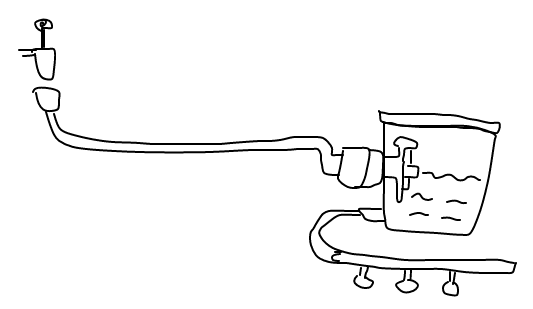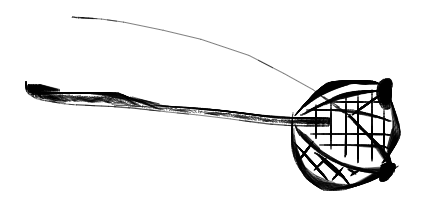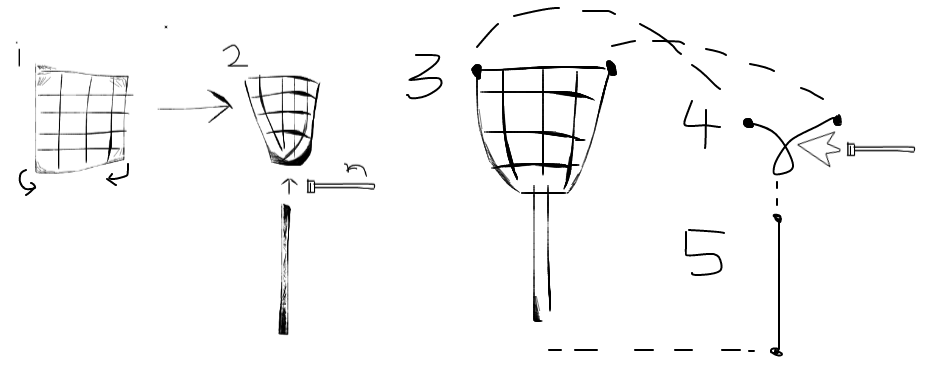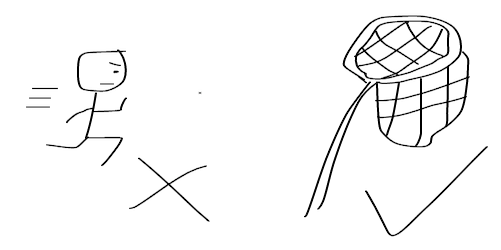Great Practical Ideas in Chicken Farming
Notes from a few years of chicken farming.
Post created: 2017-07-31
Last modified: 2019-05-20
So summer is ending and I'm not sure when I'll actively be involved in chicken farming again. This keeps track of some of the better ideas that we've had over the years.
Useful Things
Automatic Chicken Waterer
A toilet fill valve in a bucket works unreasonably well.

Components:
- Water inlet
- Garden hose
- Bucket with lid
- Toilet fill vlave
- PVC pipe
- Chicken drinkers
- Cup-style spills the least, but any push-to-dispense drinker should work
- 2019 edit: these get stuck over time, especially if your water supply is not filtered. Test them occasionally or your chickens might not be getting any water.
- Relevant connectors and PVC glue
- I personally prefer using hose connectors over ring tightening wherever possible
- More modular, easier to swap out, ring tends to rust
Notes:
- Most drinkers can't operate at household water pressure, plus water pressure regulators are expensive, unreliable and hard to find. This is why we need the toilet fill valve setup
- Leave water inlet at a trickle
- If you can't find a lidded bucket, just use a plant saucer to cover a regular bucket - don't breed mosquitoes
- The angle of the drinker matters for controlling spill
- The water drinking pipe is ultimately still gravity fed, and each type of drinker needs a certain pressure to work
- You can use the height of your water column in inches (h) to determine the water pressure, pressure in PSI is roughly 0.01 + 0.035 h
- Or you can just keep adjusting your bucket higher until water flows easily upon depressing the drinker
I think assembly is fairly straightforward.
Egg Picker
Inspired by Esio Trot.

Useful in outdoor coops with plastic mesh fencing since you can reach in and grab eggs from outside the coop.
Components:
- Plastic mesh
- Broomstick
- Zip tie (x2)
- Twine
Assembly:

- Cut a square section of plastic mesh. When folded, the middle should comfortably wrap at least 75% around a large egg.
- Using a zip tie, affix the folded mesh to the threaded end of the broomstick (where the broom head was).
- Cut a relatively short piece of twine, fixing it to the ends of plastic mesh which are shown as dots.
- You want to be able to exert an even downwards force on this twine, which will close the plastic mesh. So make a loop and zip tie the loop point as indicated.
- Now using a long piece of twine, tie one end to the loop from 4. and the other end to the end of the broomstick, leaving some slack. When you pull, it should cause the mesh to constrict on the egg.
Chicken Net
A sturdy fishing net works surprisingly well. Better than chasing it barehanded anyway.

Useful Theory
(Look! A cert in chicken behavior and welfare! appeal to authority)
More seriously, some useful information drawing heavily from week 1 of the above MOOC and other sources:
Prehatch
- Chicks hatch after 21 days in the egg (must be incubated by mother hen or artificial incubator)
- They hatch with eyes open and downy feathers, they can leave the nest after 2 days
- But the first 48 hours are crucial: this is the imprinting period
- Imprinting: chicken see, chicken do
- They'll imprint on whatever is available - no mom? Then on each other, on you...
- You really don't want chickens to imprint on not-chickens
- Without a mom, imprinting on fellow chicks = higher risk of bad behaviors like feather pecking
- Unfortunately most artificially incubated chicks don't imprint on a hen
- If you're rearing breeding birds, raise the males and females within sight of each other
Chicken Theory
- Vision:
- Panoramic vision of 300 degrees
- Binocular vision of 25 degrees
- In short, hard to sneak up on
- If you need to grab one, try throwing feed or approaching it while faking disinterest
- They can see colors and grays
- They're better at distinguishing between bright colors
- Hearing: they have ears and decent hearing (50 to 15000 Hertz)
- Taste: chickens generally dislike strong flavors, but otherwise taste isn't a strong factor
- So visual cues are more important
- And therefore if they aren't eating food, try changing shape/texture/color before taste
- Feel: chickens do feel pain, especially in their beak
- Some people beak trim to limit the damage chickens do to each other
- But whether it is ethical to do so, well... feel free to read up
- Social:
- One rooster per 10 to 12 hens
- If less than 6 hens, pls no rooster, pity the hens
- Try to keep chickens in their own flocks, mixing of separate flocks or introducing of new chickens to an existing flock can result in a murder party
- I recall reading that optimal chicken social structure happens at around 30 chickens
- But also recall reading that chickens can recognize up to 100 faces
- Pecking order is a thing
- Essentially they peck at each other to establish social rank, the stronger bullies win
- Hens usually defer to humans, some roosters don't and will try to fight you
- Allegedly you can grab non-conforming roosters with thick gloves and pin them down a few times to fix that
- Most people just convert roosters like those into dinner
- Other:
- Chickens peck at red things. This includes other bleeding chickens, bring wounded chickens into protective custody until healed, there is a blue wound spray you can use
- In general chickens are surprisingly cannibalistic. Very cannibalistic. Be prepared
- Breed matters a lot for general temperament, amount of feed consumed, growth rate, ease of plucking, etc
Eggs
- Per the MOOC, you can teach chickens to unlearn egg breaking by injecting eggs with bitter substances. Never tried it, though - just collect eggs regularly and often
- They'll use elevated egg laying boxes, if provided - I think the recommendation was one box per four hens
- Give proper chicken egg-layer feed
- Well, you're welcome to read up on the theory and design your own
- But if you have soft or weak eggshells, generally that's a feed problem
More Resources
- The University of Edinburgh Chicken MOOC - short and informative
- The community at Backyard Chickens - practical DIY ideas